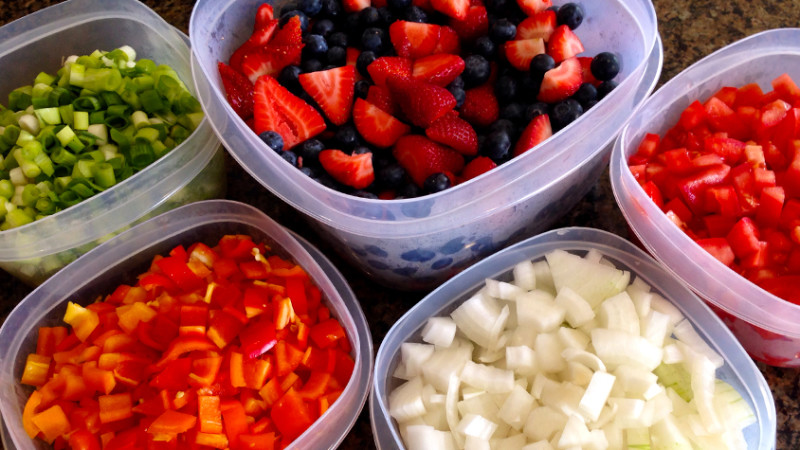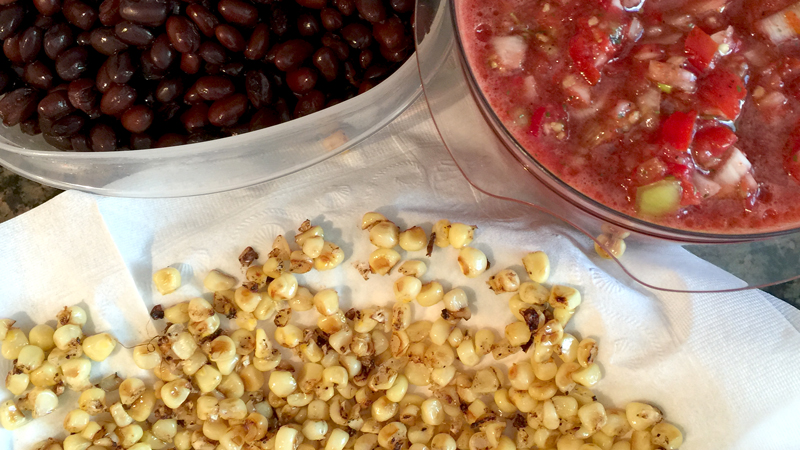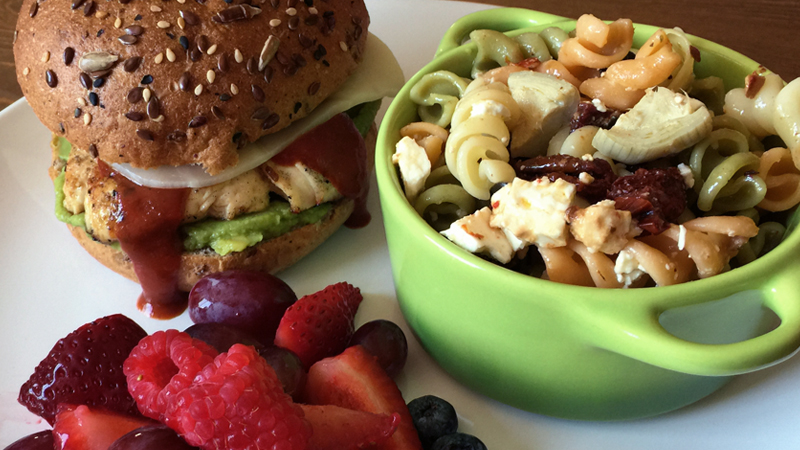
If you’re a working parent, your work week, once you account for your commute, errands, and other duties, is never only 40 hours. And, if you’re a business owner and work for yourself like I do, you know almost painfully well, how easily your workweeks can become a 50, 60, or 70+ hour work week if you’re not careful.
Being a working parent often means burning the candle at both ends.
Being an entrepreneurial parent, also means you’re constantly dancing along the edge of craziness. As the business owner, you’re not just responsible for your own job, you’re also responsible for marketing, sales, client communication, project management, invoicing, resource management, accounting, and running the business.
Luckily, I got smart and hired my husband Brian to take over my business and be my boss — so at least I have handsome help.
My Business Took A Toll On My Health
When I first ventured out on my own as a freelance designer, I had no idea how to run a business, I just knew I was a great designer — and people in my line of work do freelance — so I went for it (with a big push from my husband). I was four months pregnant and had an 18 month old at home. Life was chaotic to say the least.
I was undercharging and over delivering. It was great for my clients who loved getting high quality design work super cheap. But it was terrible for me.
Almost immediately, I was working 16-18 hour days, 7 days a week. I was exhausted. I felt guilty if I took an hour to go on a play date. I felt guilty I wasn’t playing with my kids enough. I felt guilty I was working on the weekends. I felt guilty my husband was doing everything around the house and with the kids. I wasn’t getting any exercise. And, I was eating terribly.
The last thing I wanted to do after working at 16 hour day was cook dinner, and the last thing my husband wanted to do after an entire day of housework and babies on his days off from the fire department was cook. So we ate out a lot, almost every day, sometimes twice a day, a lot.
And we gained weight. Every so often, we’d get inspired to start cooking and eating healthy at home, and we’d do great for a few weeks. But soon client work would pile up, we’d get super busy, get lazy about cooking, and start eating out again. It was a viscious cycle.
Then my husband began having some health issues.
We discovered he had a cancerous tumor in his gallbladder and had both the tumor and his gallbladder removed. While some can go back to eating a normal diet after the surgery, Brian wasn’t one of them. Funky things happen if he eats food with too much fat and he gets really tired. Plus, his oncologist told him not to eat red meat or pork.
Everything About How We Were Eating Had To Change
When Brian was dealing with his cancer, there was nothing I could do. I felt helpless. He was struggling and I just wanted to make his life easier. Cooking was how I was able to help him.
For the first 13 years of our marriage, Brian did all of the cooking, so this was big for me. I took over all of the grocery shopping and cooking, making sure we were eating healthy, well-balanced meals. I bought cookbooks, read about eating a vegetarian diet, and starting reading about what spices worked best together and what foods paired best together.
I had a lot to learn, and those first meals… Ouch! Poor Brian.
Once I started cooking — making breakfast, lunch, and dinner — I realized very quickly how much work it is and how much time it takes. So much time. There was no way this was going to work alongside all of my normal work, unless I approached cooking the same way I approached my business.
Systems and Process To Speed Up Cooking At Home

I needed systems and processes to make cooking at home easier and faster.
By taking time to do advance meal planning and meal preparation, cooking delicious meals at home became so easy, that going out to eat simply started to feel like it wasn’t worth it. Now I have systems and process in place that repeat each two week grocery cycle (starting on payday).
Meal Planning
First, I assess all of our favorite foods and meals and the ingredients needed to make them — these are the staples we need on hand all of the time. For example:
- We eat breakfast burritos or some type of big egg and veggie breakfast every morning, which require a variety of chopped veggies.
- I don’t like the same thing every day, so I mix up what goes into the burritos, like black beans, refried beans, avocados, dairy-free sour cream, and spinach.
- We like to have smoothies for one meal each day, so I always need fruits, veggies, chia seeds, and raw almonds or cashews on hand for those.
Second, I assess the lunch and quick snack options — While we typically use leftovers to make new things for lunches, I do like to have options for quick snacks or a normal lunch so we can adjust as needed based on our schedules and other plans. For example:
- I always like to have at least one salad or side item in the fridge, like pasta salad or fruit salad.
- I like some type of quick veggie like baby carrots for a crunchy snack.
- For a quick snack on the go, we usually always have dark chocolate almonds or trail mix.
Third, I assess any recipes I’m making for dinners — usually planning dinners for half of the nights in each grocery cycle. This helps eliminate food waste, as we usually always go out to dinner once or twice, or go to a friend’s or family member’s house for dinner, or eat at a work function at some point during a grocery cycle
- In each grocery cycle, I try to choose meals that use similar ingredients.
- I try to always make “extra” dinner, so there are leftovers to work with.
- We try to go “build your own” most of the time, or keep as many ingredients separate as possible, so we can use the leftovers in new ways.

Meal Preparation
I prep as much of the food for my meals as I can right when I get home from grocery shopping — it’s not super fun, and by the end my back and feet usually hurt, but the small amount of effort up front is so worth it. I promise, you’ll be thanking yourself later in the week.
Seriously, think about it: How long it would take to make the meal in the photo above — a barbecue chicken sandwich with avocado, Sun Dried Tomato And Artichoke Pasta Salad, and a fresh fruit salad?
It took me 10 minutes. That’s it. And it’s all because I prepped my meals in advance.
First, I chop all the fruit and veggies.
- I chop/slice the onions, peppers, tomatoes, green onions, and any veggies needed for other meals, putting them each in an airtight container.
- I cut up the fresh fruit, combining half in an airtight container for the refrigerator (fruit salad), and half in an airtight container for the freezer (for smoothies).
- I also open the beans and anything else in cans, like artichoke hearts and sliced olives, putting them each in an airtight container.
Having everything ready to go and easy to see in the refrigerator — these Rubbermaid Storage Containers are the best I have ever used — makes finding your ingredients faster, and cooking easier. Think about how fast making awesome breakfast burritos will be when you just need to toss a handful of each veggie into a pan with some eggs!
Second, I make any sides and cook any meat that can be made in advance. For example:
- If we want pasta salad, I’ll make the pasta salad — our favorite is my Sun Dried Tomato And Artichoke Pasta Salad.
- If we’re planning on having Chinese Chicken Salad, I’ll pre-make the crunchy, toasted ramen noodle and almond topping.
- If it’s a “taco week,” I’ll cook up the ground turkey, or if it is a chicken week, we’ll barbecue a large package of chicken.
By preparing as much of our meals as we can on Sunday, we are ready to make delicious homecooked meals all week long — without lots of work and tons of time. With this approach, breakfast burritos go from a 30 minute meal to a 10 minute meal. And dinner goes from a 20-40 minute prep time, to a 5-10 minute prep time.
How amazing is that?
What About You?
Do you plan your meals in advance? Prepare your food in advance? Are you able to stick to it every grocery cycle? Do you have a grocery cycle?
I’d love to hear from you!